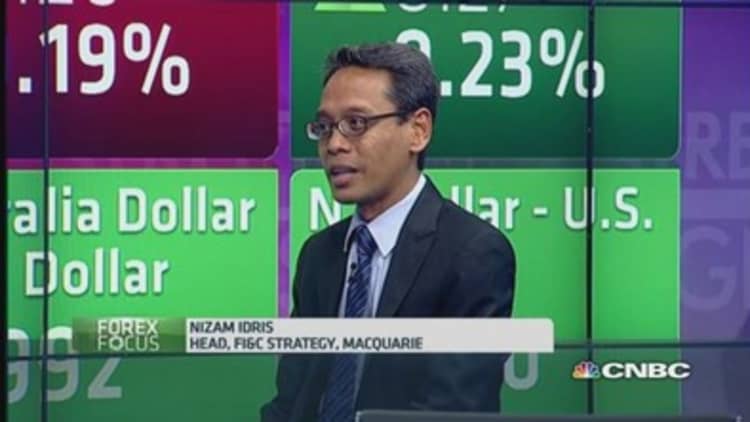After years of carefully telegraphing their outlooks to the market, central bankers are loosening up with surprise parties, with Singapore the latest to jump in.
"The Monetary Authority of Singapore (MAS) is the third central bank in Asia to significantly surprise the market (after the Bank of Japan and the Reserve Bank of India) and the market will increasingly question who will be next," HSBC said in a note Wednesday.
The Singapore central bank's move Wednesday to ease between its usual April and October meetings follows in the footsteps of larger-than-expected quantitative easing steps from the European Central Bank (ECB) and the Swiss National Bank's (SNB) shock move to unpeg its currency from the euro and slice its interest rates deeper into negative territory. Last week, the Bank of Canada also surprised markets by cutting its benchmark rate for the first time since 2010.
Read MoreAre bond yields flashing a panic signal?
Unfortunately, the parties aren't to celebrate the health of economies, analysts say. The plunge in oil prices has raised red flags on slowing inflation, which could ultimately impact growth.
For the MAS, the fact that it's made an unscheduled policy announcement for the first time since just after the 2001 terrorist attacks in the U.S., is quite telling.

"MAS is more concerned than it let on about the global economy and disinflationary forces," HSBC said. "The urgency and the magnitude of the decision [Wednesday] reflect more than just concern about the domestic inflation outlook owing to lower oil prices."
The MAS reduced the slope of the Singapore dollar's appreciation against an undisclosed, trade-weighted basket of currencies, its first easing move since 2011, citing low domestic inflation. Rather than using interest rates, Singapore sets its monetary policy by adjusting the currency's trading range. In December, the city-state's consumer price index fell 0.2 percent on-year after declining 0.3 percent in November.
It's a pattern being repeated globally, and some analysts expect more monetary easing ahead.
Read MoreCurrency war: Who will be the casualties?
"Inflation rates are falling globally, which are panicking central banks to do more than what even the most pessimistic analyst may have predicted," Bank of America Merrill Lynch said in a note Tuesday. "Central bankers globally are underestimating the deflation threat, and once recognized, they will be surprised at how much they have to ease to fight it."
But some think "panic" mischaracterizes the moves.
"For Asia, it's not panic. You could call it panic in Europe," said David Carbon, chief economist at DBS. "Growth is relatively weak, especially in the G-3," but Asia has been a "steady Eddie," growing around 6 percent a year for a while, he said.
Carbon believes Asia's central bank surprises aren't entirely about oil and deflation fears, with the moves likely related to the region's less-than-obvious currency strength.
"All are down against the dollar, but they're way up against the euro and the yen" he noted, estimating the region's currencies are up 7-10 percent against the three-currency basket over the past six months.
Read MoreSingapore gets on the easing bandwagon
Indeed, some believe that central bankers' surprise parties can be happy ones.
"These surprises tend to be market supportive," Dariusz Kowalczyk, senior economist at Credit Agricole, said. "The surprise that provides additional cash or cheaper funding is not so dangerous."
—By CNBC.Com's Leslie Shaffer; Follow her on Twitter @LeslieShaffer1


